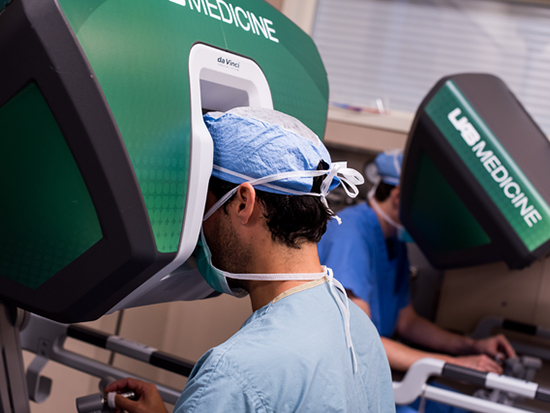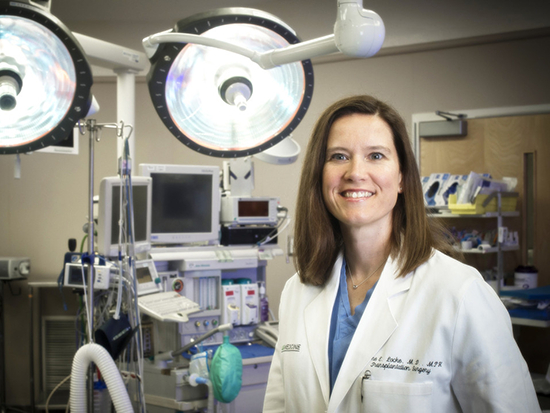|
Daniel C. Bullard, Ph.D. |
 |
Dr. Bullard received his undergraduate degree in zoology from Iowa State University and his Ph.D. in genetics from Case Western Reserve University. During his postdoctoral studies in the Department of Human and Molecular Genetics at Baylor College of Medicine in Houston, he initiated research investigating the role of leukocyte/endothelial cell adhesion molecules in inflammatory processes. He joined the Department of Genetics at UAB in 1996.
Dr. Bullard’s research interests are centered on defining the mechanisms that regulate inflammation. For these investigations, we have focused our studies on defining the roles of leukocyte/endothelial cell adhesion molecules in mediating inflammatory responses. These proteins, along with chemoattractant/activating molecules, mediate the process by which leukocytes exit the vasculature into tissue in response to an inflammatory stimulus. Many different adhesion molecules have been described, including the selectins, integrins, and members of the immunoglobulin superfamily of adhesion receptors. Recent evidence from our lab and others suggest that these molecules play both pro- and anti-inflammatory roles, and we are using a genetic approach in mice to further define these functions. For our studies, we have developed many different lines of adhesion molecule mutant mice using gene-targeting methodologies. Mice with single or multiple mutations are currently being analyzed in models of rheumatoid arthritis, lupus erythematosus, vasculitis, and inflammatory bowel disease to determine their specific roles in the pathogenesis of these diseases. Our lab has also characterized a novel model for psoriasis and psoriatic arthritis that develops in Beta-2 integrin mutant mice backcrossed onto the PL/J strain background. We are now trying to map and clone the genes that control the development of both the skin disease and the arthritis in this model system.
Selected Publications
- Kevil, C.G., Patel, R.P. and Bullard, D.C. Essential role of ICAM-1 in mediating monocyte adhesion to aortic endothelial cells. Am. J. Physiol. Cell Physiol. 281:C1442-C1447, 2001.
- Kevil, C.G. and Bullard, D.C. In vitro culture and characterization of gene targeted mouse endothelium. Acta Physiol. Scan. 173:151-158, 2001.
- Reinhardt, R.L., Bullard, D.C., Weaver, C.T., and Jenkins, M.K. Effector CD4 T cells accumulate preferentially at the antigen injection site during the primary response via CD62E-dependent mechanism but do not proliferate. J. Exp. Med. 197:751-762, 2003.
- Barlow, S.C., Collins, R.C., Lindsey, J.R., Weaver, C.T., Schoeb, T.R., and Bullard, D.C. The development of dermatitis in Itgb2tm1Bay mice requires low level Itgb2 expression and at least two different PL/J loci for severe disease. Amer. J. Pathol. 163:197-202, 2003.
- Barlow, S.C., Xu, H., Weaver, C.T., Lindsey, J.R., Schoeb, T.R. and Bullard, D.C. Psoriasiform dermatitis in CD18 deficient PL/J mice is a mediated by both CD4+ and CD8+ T lymphocytes. Int. Immunol. 16:345-351, 2004.
- Clark, J.G., Mandac, J.B., Dixon, A.E., Madtes, D.K., Burkhart, K., Martin, P.J., Harlan, J.M. and Bullard, D.C. Trafficking of Th1 cells to lung: A role for selectins and a PSGL-1 independent ligand. Amer. J. Respir. Cell Mol. Biol. 30:220-227, 2004.
- Kevil, C.G., Orr, A.W., Langston, W., Mickett, K., Murphy-Ullrich, J., Patel, R.P., Kucik, D.F. and Bullard, D.C. ICAM-1 regulates endothelial cell motility through an NO dependent pathway. J. Biol. Chem.279:19230-19238, 2004.
- Kevil, C.G., Hicks, M.J., He, X., Zhang, X., Ballantyne, C.M., Raman, C., Schoeb, T.R. and Bullard, D.C. Loss of LFA-1, but not Mac-1, protects MRL/MpJ-Faslpr mice from autoimmune disease. Amer. J. Pathol. 165:609-616, 2004.






